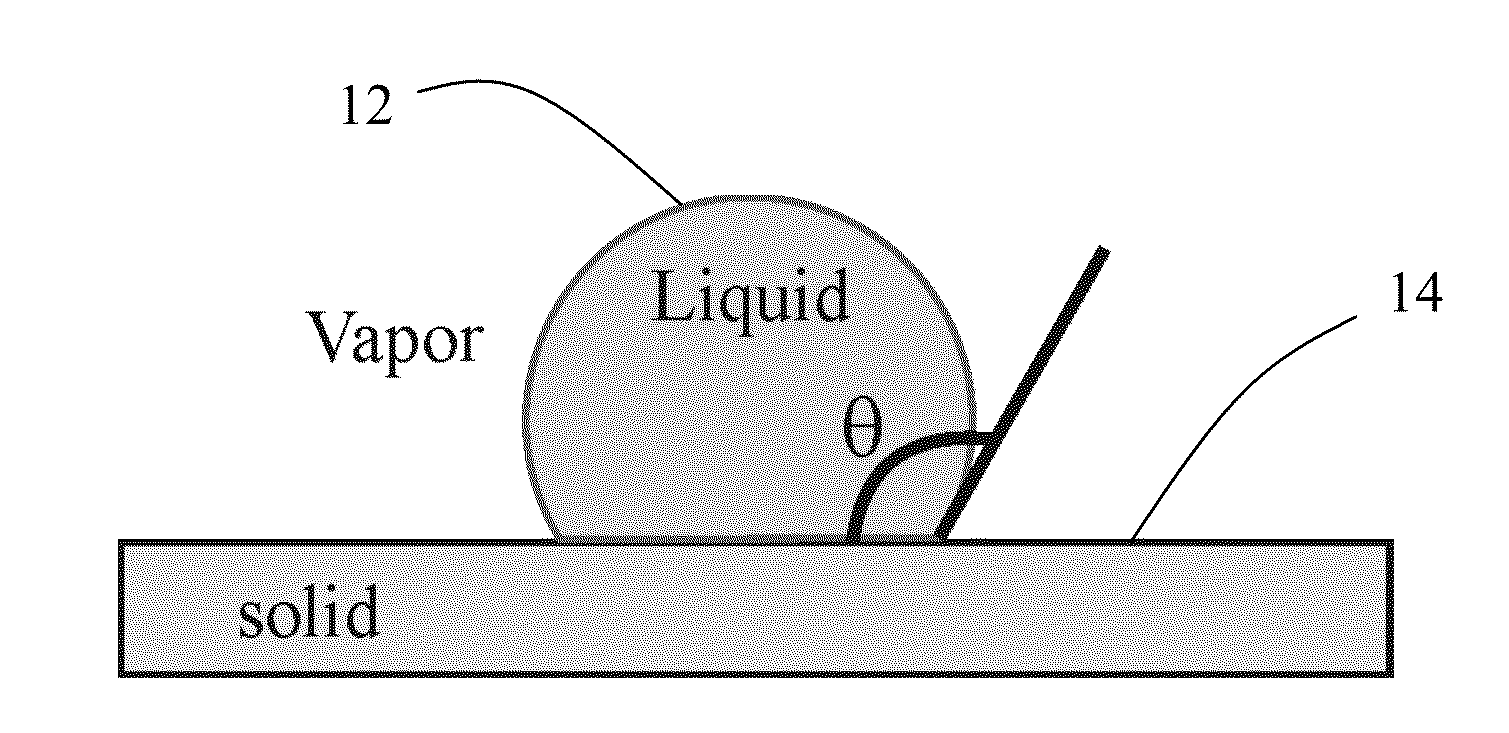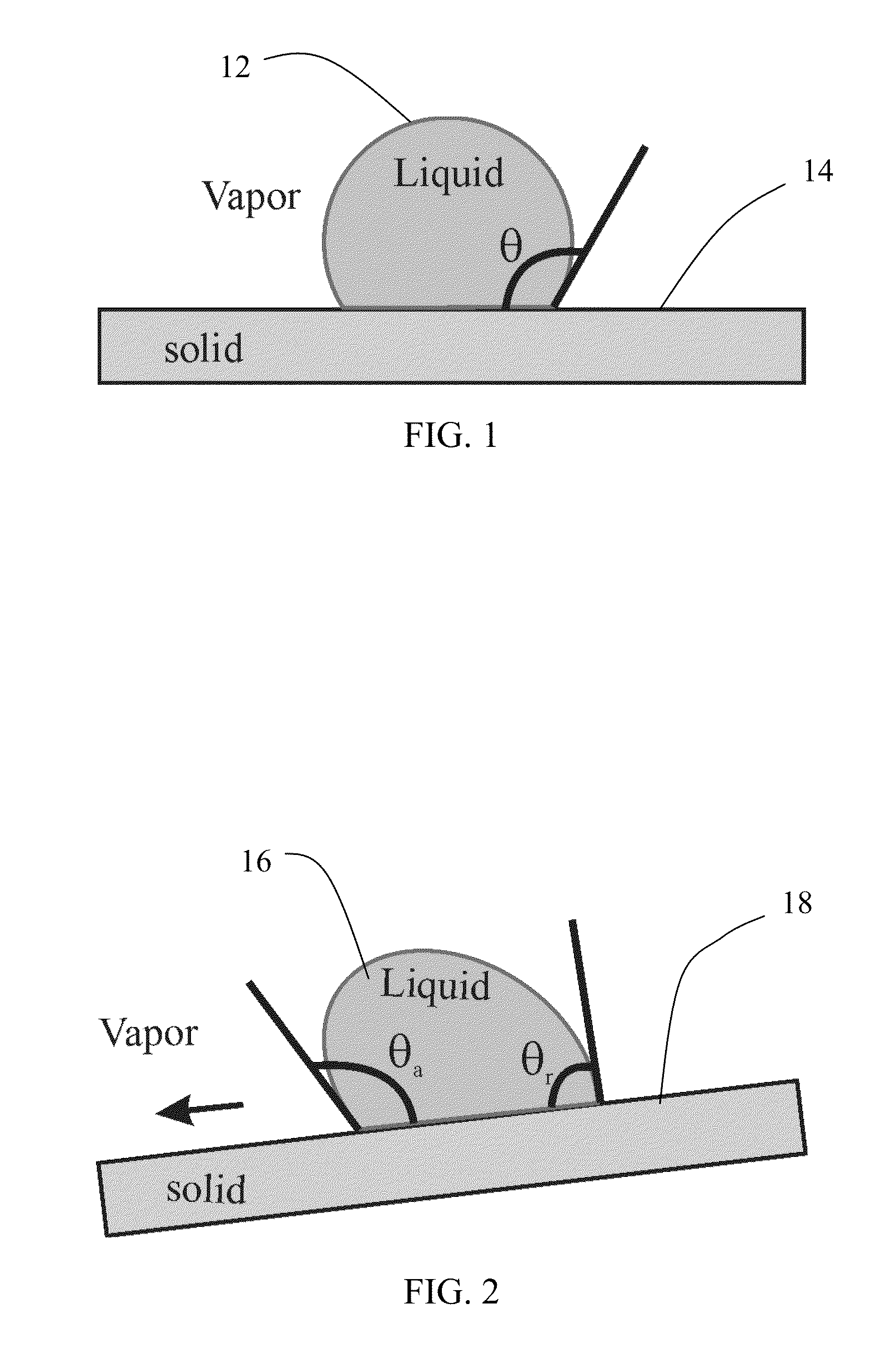Hydrophobic Materials Incorporating Rare Earth Elements and Methods of Manufacture
a rare earth element and hydrophobic technology, applied in the field of nonwetting materials, can solve the problems of not having reported a previous coating material that is both robust and hydrophobic, and achieve the effects of superior water repellency, and promoting dropwise water condensation
- Summary
- Abstract
- Description
- Claims
- Application Information
AI Technical Summary
Benefits of technology
Problems solved by technology
Method used
Image
Examples
examples
[0097]Hydrophobic surfaces were produced by forming a thin coating (between about 200 nm and 350 nm) of a ceramic material containing a rare earth oxide onto both smooth and textured substrates. Wetting measurements indicated that advancing water contact angles of these surfaces ranged from 115° for smooth to 160° for textured substrates. These contact angles are well beyond the water contact angles obtained with common metal oxides, such as alumina (Al2O3) and silica (SiO2), which have water contact angles of about 25-30° and about 15-20°, respectively. FIGS. 9 through 12 depict water droplets 900 resting on the alumina surface 902, the silica surface 1000, the smooth hydrophobic surface 1100, and the textured hydrophobic surface 1200.
[0098]As discussed in more detail below, systematic water droplet impingement, water condensation, and thermal stability experiments were performed to characterize the performance of the hydrophobic materials containing a rare earth oxide, described h...
PUM
| Property | Measurement | Unit |
|---|---|---|
| dynamic contact angle | aaaaa | aaaaa |
| thickness | aaaaa | aaaaa |
| temperature | aaaaa | aaaaa |
Abstract
Description
Claims
Application Information
 Login to View More
Login to View More - R&D
- Intellectual Property
- Life Sciences
- Materials
- Tech Scout
- Unparalleled Data Quality
- Higher Quality Content
- 60% Fewer Hallucinations
Browse by: Latest US Patents, China's latest patents, Technical Efficacy Thesaurus, Application Domain, Technology Topic, Popular Technical Reports.
© 2025 PatSnap. All rights reserved.Legal|Privacy policy|Modern Slavery Act Transparency Statement|Sitemap|About US| Contact US: help@patsnap.com



